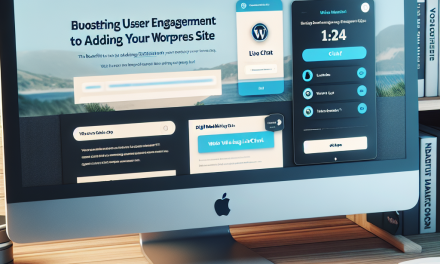In today’s digital landscape, your website’s performance can make or break user experience. Slow loading websites can lead to high bounce rates, reduced user engagement, and low conversion rates. Fortunately, there are effective strategies to enhance website performance, one of the most powerful being lazy loading.
What is Lazy Loading?
Lazy loading is a design pattern that postpones loading non-essential resources (like images and videos) until they are needed. Instead of downloading all elements on a page immediately, lazy loading ensures that images only load when they come into the user’s viewport. This not only speeds up the initial page load time but also contributes to lower bandwidth usage, especially useful for mobile users.
How Does Lazy Loading Improve Performance?
-
Faster Initial Load Time: With fewer resources to load at first, your website can become accessible almost instantaneously. Users will appreciate the swift response, leading to better engagement and retention rates.
-
Reduced Server Load: Since lazy loading decreases the number of requests sent to the server during the initial page visit, it can alleviate server strain. This is particularly beneficial for high-traffic websites, ensuring consistent performance during peak times.
-
Improved SEO: Search engines like Google favor websites that load quickly, which means employing lazy loading can positively affect your site’s search ranking. A faster website leads to a better user experience, bolstering your chances of achieving higher search visibility.
- Increased User Engagement: Users are more likely to stay on a site that loads quickly. By minimizing load times with lazy loading, you increase the chances of reduced bounce rates and higher engagement levels, ultimately leading to better conversion rates.
How to Implement Lazy Loading in WordPress
If you’re running a WordPress site, implementing lazy loading is straightforward. You can either include lazy loading manually or use a plugin. Here are a few recommended plugins that can help you get started:
-
Lazy Load by WP Rocket: This plugin provides an easy way to enable lazy loading for images, iframes, and videos without needing to touch any code.
-
a3 Lazy Load: Another solid option, a3 Lazy Load allows you to lazy load images, videos, and multiple sources like iframes.
- WP Smush: In addition to image optimization, WP Smush includes lazy loading features, allowing you to compress images and boost performance simultaneously.
You can easily find these plugins in the WordPress plugin repository here.
Best Practices for Lazy Loading
While lazy loading can drastically improve your site’s performance, consider these best practices to maximize its effectiveness:
-
Implement it selectively: Not every image or video on your website should be lazy loaded. Prioritize larger, non-essential media that can afford a slight delay in loading.
-
Use a Placeholder: Show a low-resolution image or a loading spinner before the actual content is fully loaded to improve user experience.
- Test Your Implementations: After enabling lazy loading, always test your website’s performance to ensure everything works correctly and loading times are indeed reduced.
Conclusion
Incorporating lazy loading into your website strategy can yield significant performance improvements, making your site faster and more user-friendly. At WafaTech, we offer innovative solutions like NextGen WordPress Hosting to ensure that your site runs smoothly while catering to your business needs. Experience unmatched speed and reliability with our superior hosting services tailored for performance.
👉 Discover more about WafaTech NextGen WordPress hosting here!
By embracing the power of lazy loading and leveraging WafaTech’s hosting capabilities, you can significantly enhance your website’s performance and deliver an excellent user experience.
For more resources, you can check the official WordPress documentation on lazy loading.
Boost your website performance today!





